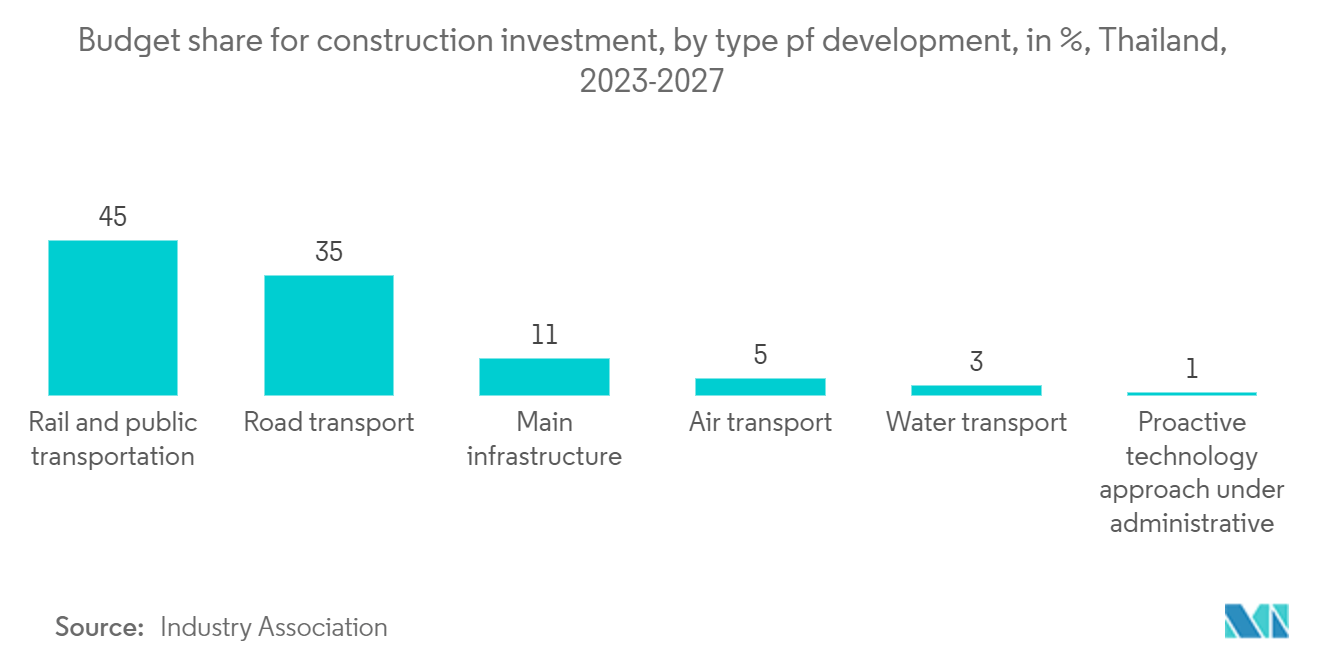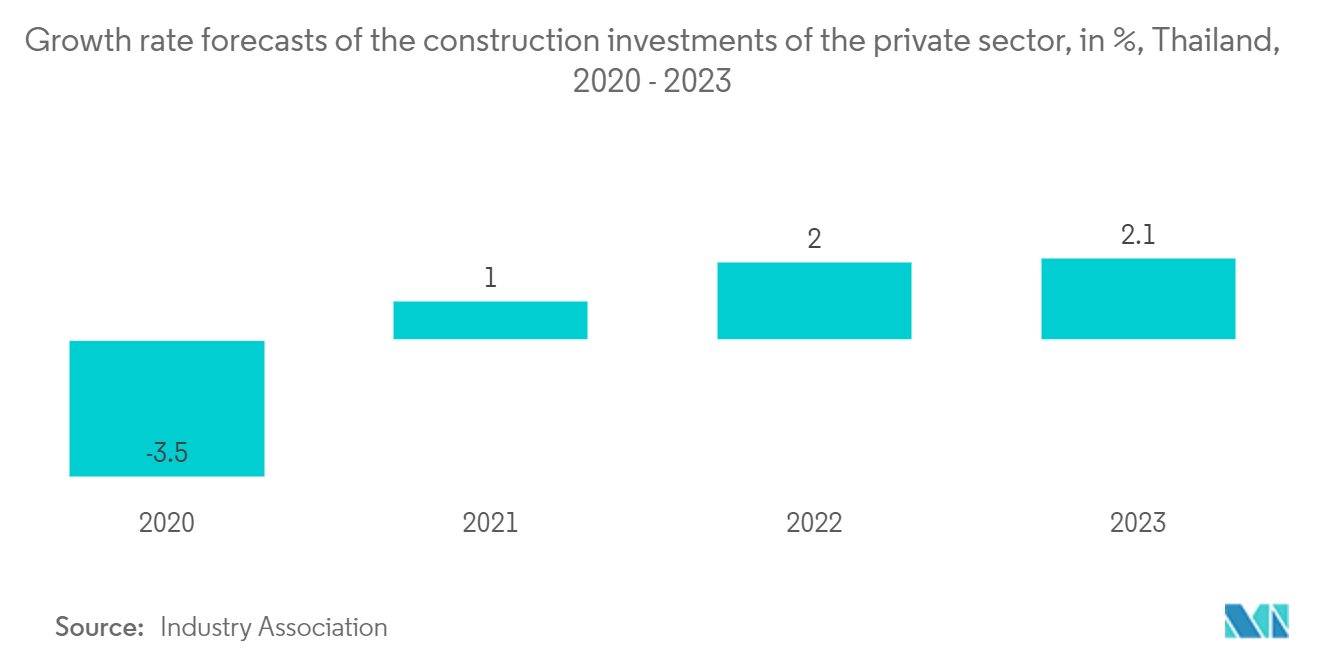Market Trends of Thailand Construction Industry
Increase in road infrastructure projects
The focus of the spending plans is a significant investment in 20 projects spread across five key sectors. These are anticipated to have the biggest effects on lowering energy and transport costs, enhancing the connection with other nations, sharing revenue and growth fairly across Thailand, and boosting private investment. The expansion of mass rapid transit networks in the BMR will receive an additional 22.1% of this financing, making up the second-largest portion of the total, behind the rail sector, which would receive 65.9% of it. 8.9% of the funding will go to the intercity road system, with the remaining 2.9% and 0.2% going to the air and water transportation sectors, respectively.
Thailand's highway and secondary road network is already far more developed than most of its neighbors, with 66,794 km of public roads, plus highways operated by the Thai Highway and Highway Transport Authority. 354 km. The majority of the country's road network is still country roads and provincial roads, of which 47,916 km and 352,157 km, respectively. For TIDMP, much of the current road development is focused on the development of ring roads around Bangkok and modern four-lane highways outside the BMR and throughout the country. Other major highways awaiting concessions include the Pattaya-Map Ta Phut Expressway, with an estimated value of 20.2 billion BT (USD 569 million), Bang Pa-in-Saraburi-Nakhon Ratchasima Expressway (84.6 billion BT, USD 24 billion), and Bang the Highway. Yai Van Phong Kanchanaburi Expressway (BT 55.6 billion, USD 1.6 billion).

Infrastructure projects drives the market
Thailand’s government has settled to speed up framework venture and development in 2022, putting the need on common rail lines and quickening USD 60 billion in investing in megaprojects. The investing and speculation will increment network and coordination all through the Kingdom and with neighboring nations. It'll also impel the completion of 36 megaprojects that ought to invigorate financial advancement. The moves are a portion of the government’s progressing nationwide infrastructure overhaul to extend the Kingdom’s worldwide competitiveness.
Framework ventures (81% of all public-sector investing in development): Consumption rose 5.8% within the year, with the foremost vital ventures being: (1) the 3 modern MRT lines in Bangkok that are due to be opened in 2022, to be specific (i) the Orange Line from Thailand Social Center to Minburi (Suwinthawong), which is 89.5% total, (ii) the Yellow Line from Lat Phrao to Samrong, which is 88.7% total, and (iii) the Pink Line from Khae Rai to Minburi, which is 83.9% total (data adjust as of December 2021); and (2) stage 3 of the development of the Outline Ta Phut Harbour within the EEC, for which ground was broken in July 2021.
Thailand is to invest around USD 15 billion in transport infrastructure, including upgrades to its key container port, Laem Chabang, in order to boost economic growth. Of the speculation sum, generally, USD 3 billion will go towards updating Laem Chabang to extend Thailand's trade and purport cargo transportation capacity. Other than Laem Chabang, the government plans to construct and create one mechanized holder terminal along Bangkok port's West Wharf in the future.


